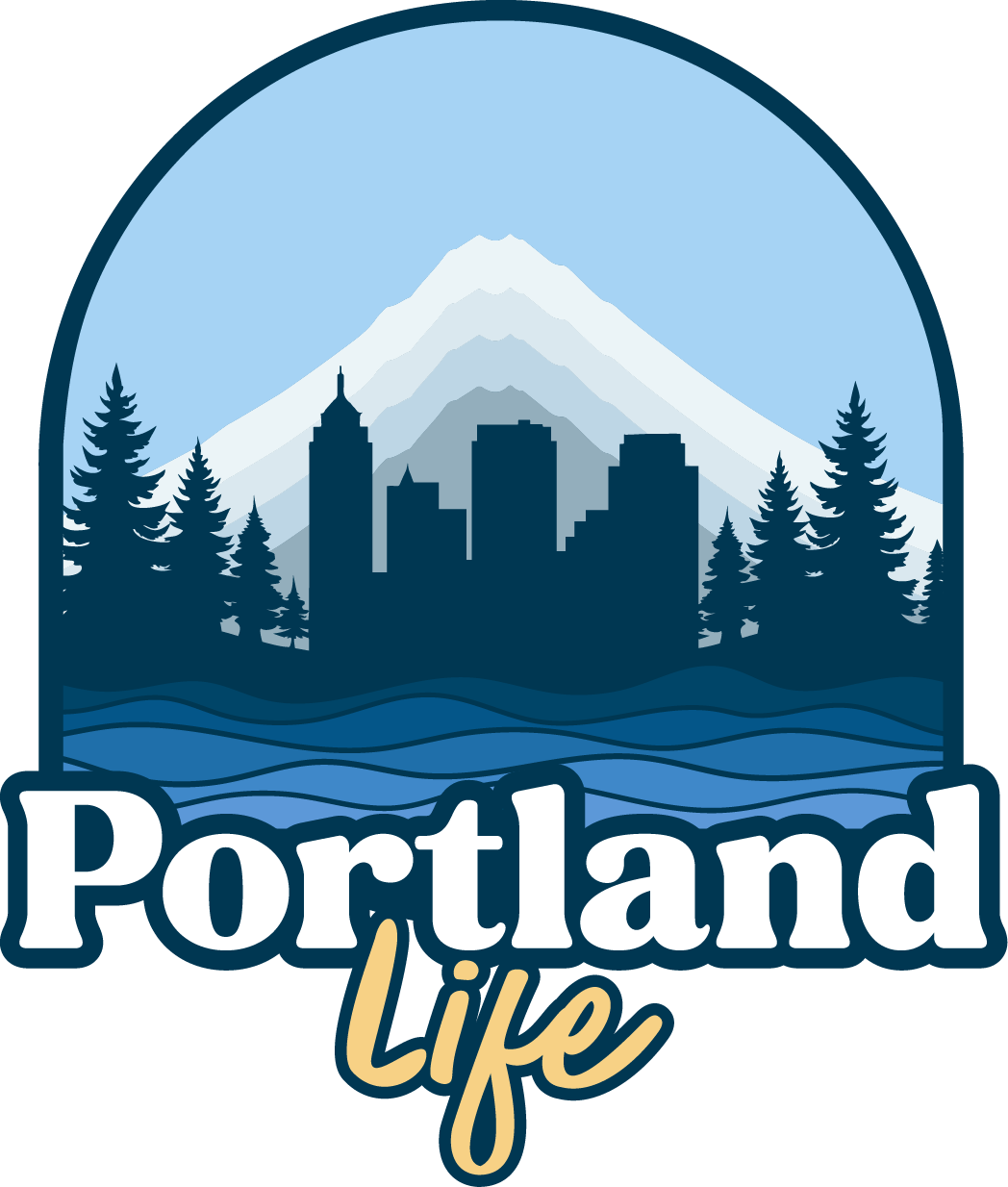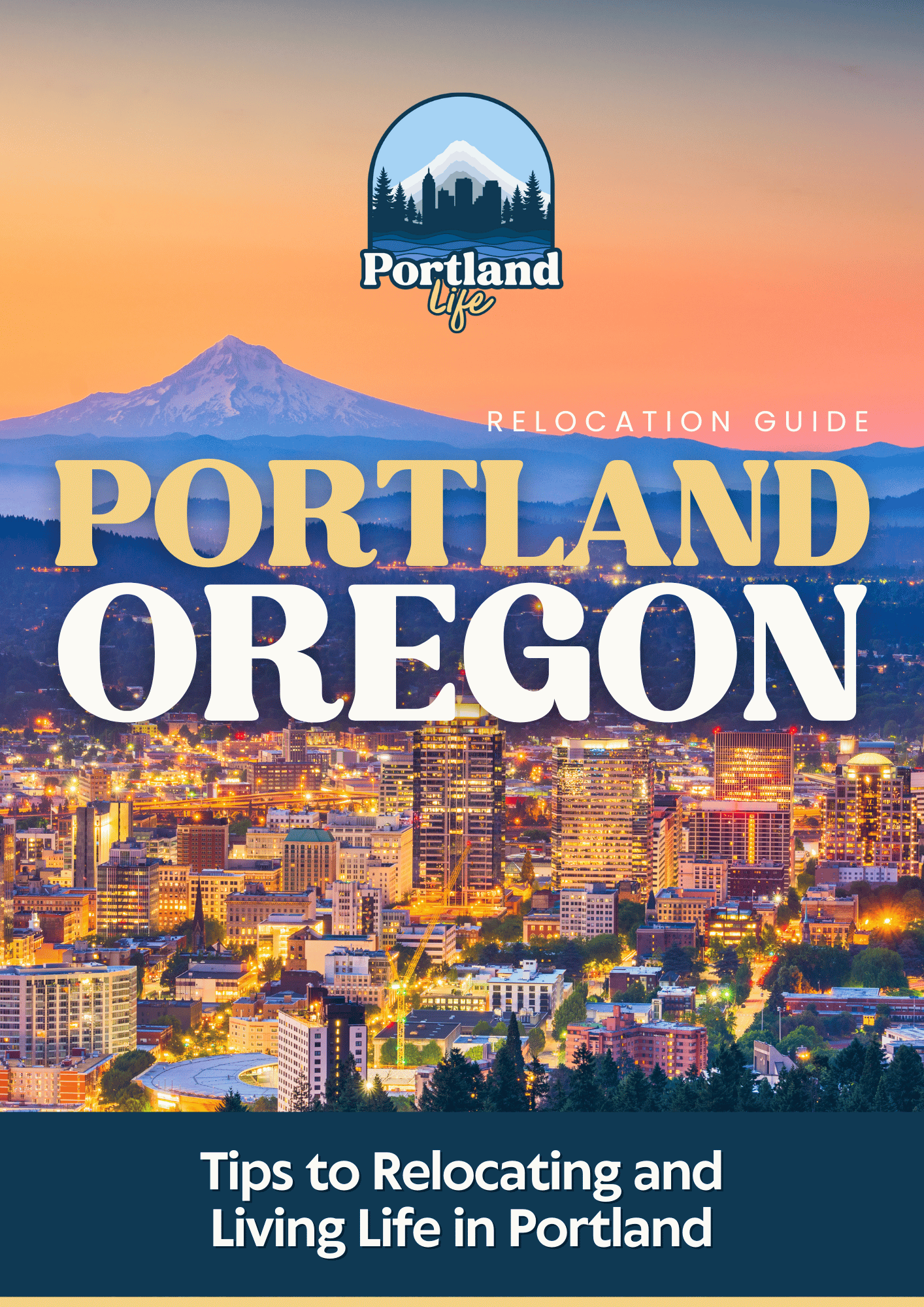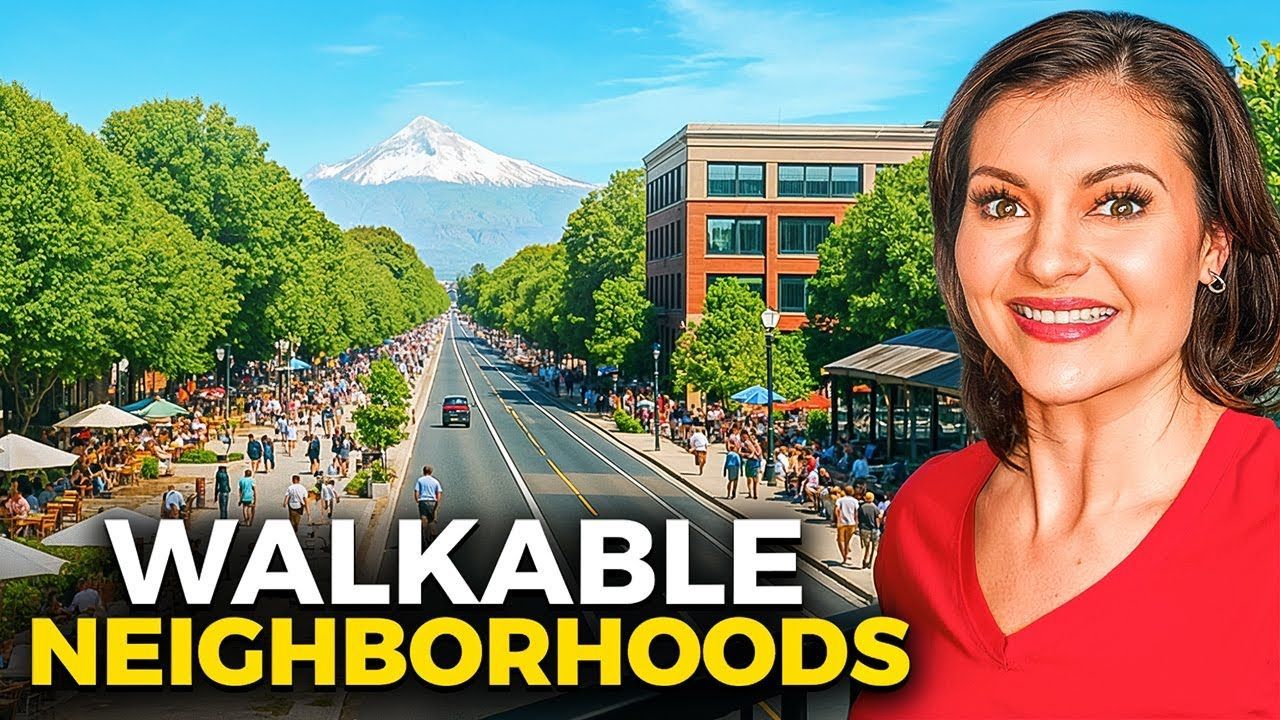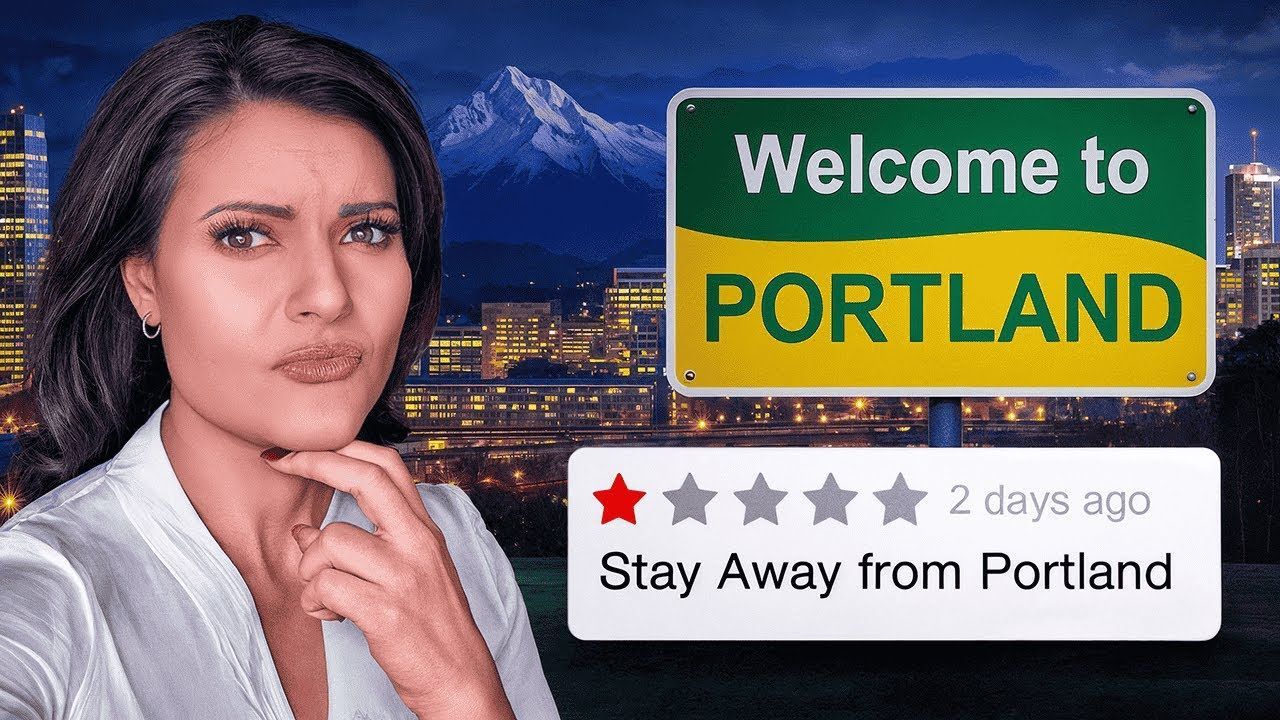The REAL Reason People Love Living in Portland, Oregon
In this article I want to lay out, in a friendly and practical way, why so many people fall in love with living in Portland, Oregon. We'll walk through exercise options, air quality, local food culture, green building practices, healthcare access, and the kinds of day-to-day choices that add up to a healthier life here.
We created the original video to share what we've learned from living and working in the Portland metro area. Now I'm taking that conversation and expanding on it—bringing context, useful details, and answers to questions we hear all the time from people considering living in Portland, Oregon.
Table of Contents
- Introduction: Why Portland, Oregon Is One of the Healthiest Cities to Live In (2025)
- Access to Exercise and Outdoor Activities in Portland, Oregon
- Air Quality in Portland: What Residents Need to Know
- Low Smoking and Obesity Rates in Portland, Oregon
- Portland’s Food Scene: Healthy Options and Local Favorites
- Construction and Urban Development in Portland: What It Means for Residents
- Healthcare in Portland, Oregon: Quality and Accessibility
- Why Portland Oregon Stands Out as a Healthy City to Live In
- Frequently Asked Questions About Living in Portland, Oregon
- Practical Tips for People Considering Moving to Portland, Oregon
- Final Thoughts on Living in Portland, Oregon
Introduction: Why Portland, Oregon Is One of the Healthiest Cities to Live In (2025)
When people ask us, "Why Portland?" the answer often comes down to lifestyle. If you care about wellness, outdoor access, locally sourced food, and green living practices, living in Portland, Oregon has a lot to offer. That doesn't mean it's perfect—every city has areas for improvement—but if you want a place where health is woven into everyday life, Portland stands out.
Over the years we've seen people move here specifically for the chance to be more active, to breathe cleaner air, and to enjoy food that emphasizes local farmers and sustainable practices. We also see it in the metrics: studies and rankings repeatedly cite Portland among healthier urban areas for reasons we'll get into below.
Access to Exercise and Outdoor Activities in Portland, Oregon
One of the first things people notice about living in Portland, Oregon is how easy it is to be active. This isn't just about having gyms—it's about an entire city that makes outdoor movement a default option.

Portland's trail systems are legendary. Forest Park alone contains more than 100 miles of trails—Leif Erikson Drive and the Wildwood Trail are two big names you'll hear again and again. Leif Erikson is wide and forgiving, while Wildwood offers single-track adventure through dense Northwest forest. These trails are accessible from many neighborhoods and provide everything from short nature walks to all-day hikes.
Beyond Forest Park there's the Columbia River Gorge—one of the crown jewels for people living in Portland, Oregon. The old highway along the gorge has been converted into a breathtaking trail system. Recently, investment has turned sections near waterfalls and scenic overlooks into multi-use corridors where you can walk or bike for miles with restaurants and viewpoints along the way. It's not hyperbole to say you can ride as far as the eye can see and stop for a great meal on the way.
Closer to the city the Springwater Corridor runs along the Willamette River and connects neighborhoods with parks, natural areas, and community hubs. This is a commuter and recreational route—used by people walking, biking, and pushing strollers. For anyone considering living in Portland, Oregon, the Springwater Corridor is a perfect example of how infrastructure supports activity.
Water recreation is huge here too: kayaking, paddleboarding, and stand-up paddleboarding are common on the Willamette and Columbia. If you prefer air sports, there’s a surprisingly vibrant gliding community. Horseback riding, climbing, and year-round golf are all popular. We even have folks who ride or run despite rain because that’s part of the culture—rain isn’t a reason to stay inside here.
For indoor workouts, Portland has every niche gym you can imagine—CrossFit boxes, OrangeTheory, boutique pilates studios, climbing gyms, and large clubs that include pools, saunas, and cold plunge options. So whether you want a solo hike, a community run group, or a membership at a full-service athletic club, living in Portland, Oregon gives you choices.
- Trails and parks: Forest Park, Wildwood Trail, Columbia River Gorge.
- Multi-use corridors: Springwater Corridor and waterfront trails.
- Water and air sports: kayaking, paddleboarding, gliding.
- Indoor fitness: CrossFit, boutique studios, large clubs, climbing gyms.
- Active culture: many residents exercise year-round despite rain.
Air Quality in Portland: What Residents Need to Know
Air quality is a critical and often overlooked part of urban health. For many people, a cleaner atmosphere is a key reason for choosing their next home. In general, living in Portland, Oregon means you’ll get better-than-average air. Agencies that track long-term air data, like AirIQ and others, rate Portland's annual mean air quality as "good" over extended time frames. That makes a difference for daily comfort and long-term health.
There are caveats: wildfire smoke can affect air quality in August and other dry months, and weather patterns that trap air can create short-term stagnation and haze. In those times locals pay attention to air advisories and modify outdoor plans. But compared to many big metropolitan areas that suffer from chronic smog, living in Portland, Oregon generally offers clean and moist air—people often comment that they can "just breathe" here.
Portland benefits from geography: proximity to the ocean, the Cascades, and the Coast Range creates air movement and dilution in most seasons. Add to that the city's extensive tree canopy and green spaces, and you end up with an environment where outdoor activity is a healthier daily habit for many residents.
- Long-term air ratings: generally "good" based on multi-decade averages.
- Seasonal risks: wildfire smoke and occasional weather-related stagnation.
- Geography helps: ocean and mountain air patterns moderate pollution.
- Green canopy: trees contribute to cleaner air and a comfortable moisture level.
Low Smoking and Obesity Rates in Portland, Oregon
Public health metrics tell a clear story: living in Portland, Oregon is associated with some of the lower obesity and smoking rates in the country. These are not just numbers on a chart; they reflect lifestyle trends, food culture, and local policies that prioritize health.
Smoking has been restricted in many public spaces and even in some residential communities. For example, many apartments and condo developments have smoke-free policies and local ordinances require a distance between smokers and entryways. These norms reduce secondhand exposure and encourage quitting or reduced smoking prevalence overall.
Obesity rates are lower here in part because people have access to fresh food and the infrastructure to be active. There are fewer fast-food dominated neighborhoods compared to many parts of the country, and more places that emphasize whole foods, vegetables, and balanced plates. That doesn't mean unhealthy options don't exist—of course they do—but the culture leans toward mindful eating and portion control.
- Smoking: generally low traditional tobacco rates; marijuana is legal and prevalent but distinct.
- Obesity: lower than national averages—partly due to active lifestyle and local food choices.
- Policies: smoke-free housing initiatives and public health campaigns support healthier living.
Portland’s Food Scene: Healthy Options and Local Favorites
If you love food—and many people who choose living in Portland, Oregon do—you’ll appreciate how local sourcing and food culture influence health. The city has an impressive network of farmers markets, community-supported agriculture (CSAs), small-scale meat producers, food co-ops, and restaurants that proudly disclose sourcing.
The Portland Saturday Market and the Park Blocks farmers market are local staples. Farmers come from as far south as the Willamette Valley and as far north as Vancouver (WA). Fresh berries, early asparagus, winter greens, artisan cheeses, and small-batch meats are available across seasons. For meat-eaters there are lots of opportunities to buy from sustainable, local ranchers—quarter or half shares of whole animals are fairly common, and many families appreciate this for both quality and cost reasons.

Local restaurants often advertise where their ingredients come from—down to the condiments. You'll see menus that say things like "c" or "cheese from Y creamery." That level of transparency is part of the culture and it reinforces consumer demand for higher-quality, local food.
Portland also scores well for dietary variety. If you’re vegan, vegetarian, pescatarian, gluten-free, or nut-sensitive, you’ll find options everywhere. Bakeries and cafes frequently cater to dietary restrictions, and the city's restaurant scene is used to accommodating a broad set of needs—another reason people who prioritize nutrition choose living in Portland, Oregon.
- Farmers markets and CSAs provide year-round access to fresh produce.
- Local meat: small-batch, pasture-raised options are widely available.
- Restaurant culture: transparency about sourcing and a focus on farm-to-table.
- Dietary diversity: plentiful options for special diets and allergies.
Construction and Urban Development in Portland: What It Means for Residents
How a city is built affects both environmental health and individual well-being. Living in Portland, Oregon exposes you to progressive building practices that prioritize sustainability and comfort.
One of the most visible policies is the eco-roof rule: many new commercial buildings over a certain size are required to incorporate vegetation on rooftops. These "green roofs" reduce the urban heat island effect, help manage stormwater, extend roof lifespans, and provide small pockets of green in dense neighborhoods. Walk around downtown and you'll spot rooftop gardens and even dog play areas—little urban oases that contribute to the city's livability.
Solar panels have become more common, though opinions vary. Some homeowners and builders embrace solar widely; others take a more measured approach based on roof orientation, shading, and cost. The broader point is that energy efficiency is a first-order priority for many local developers—high-efficiency appliances, advanced insulation, heat pumps, and other measures are common selling points in new builds.

Planned communities like Reed's Crossing in Hillsboro showcase how Portland-area development can scale sustainability into neighborhoods: preserved wetlands, stormwater-designed parks, native plantings, and wildlife-friendly corridors all appear in these projects. This kind of planning reduces environmental impact and makes neighborhoods healthier long-term.
- Eco-roofs: vegetation on rooftops for stormwater, cooling, and aesthetics.
- Energy efficiency: high-performance appliances, insulation, and sometimes solar.
- Sustainable neighborhoods: developments that incorporate wetlands, native plants, and wildlife pathways.
- Carbon sequestration: trees and plants in urban planning capture carbon and improve air quality.
Healthcare in Portland, Oregon: Quality and Accessibility
No conversation about health is complete without talking about healthcare access. Living in Portland, Oregon usually means better access to primary care and a wide range of specialty services.
One striking metric: for every primary care physician in the region there are about 680 residents, compared to a national average closer to 1,330 residents per primary care physician. That ratio suggests easier access to primary care appointments, which leads to better preventive care and health maintenance.
The city is home to major health systems: Kaiser Permanente, Providence, and Oregon Health & Science University (OHSU) among others. OHSU is a teaching and research hospital that brings advanced specialty services to the region. Emanuel Children's Hospital provides pediatric specialty care, and urgent care clinics are plentiful for day-to-day needs.
Alternative and integrative healthcare is strong here as well. You’ll find chiropractors, acupuncturists, naturopathic clinics, massage therapists, and functional medicine practitioners. Many residents combine primary care with a functional approach to manage chronic issues or support wellness proactively. If you value a proactive, integrative approach to your health, living in Portland, Oregon makes it easy to find practitioners who align with that philosophy.
- Primary care access: a favorable physician-to-resident ratio improves preventative care.
- Specialty hospitals: OHSU, Emanuel, and larger systems provide advanced care.
- Alternative options: naturopathy, acupuncture, chiropractic care, and functional medicine are widely available.
- Urgent care and clinics: easy-to-find immediate care and specialty services.
Why Portland Oregon Stands Out as a Healthy City to Live In
To sum it up: living in Portland, Oregon means access to trails and outdoor spaces; a culture of activity; great air quality most of the year; a food scene that prioritizes local, fresh ingredients; progressive building practices that support sustainability; and a robust healthcare ecosystem. These elements together make the region attractive for anyone who weighs health and lifestyle heavily when choosing where to live.
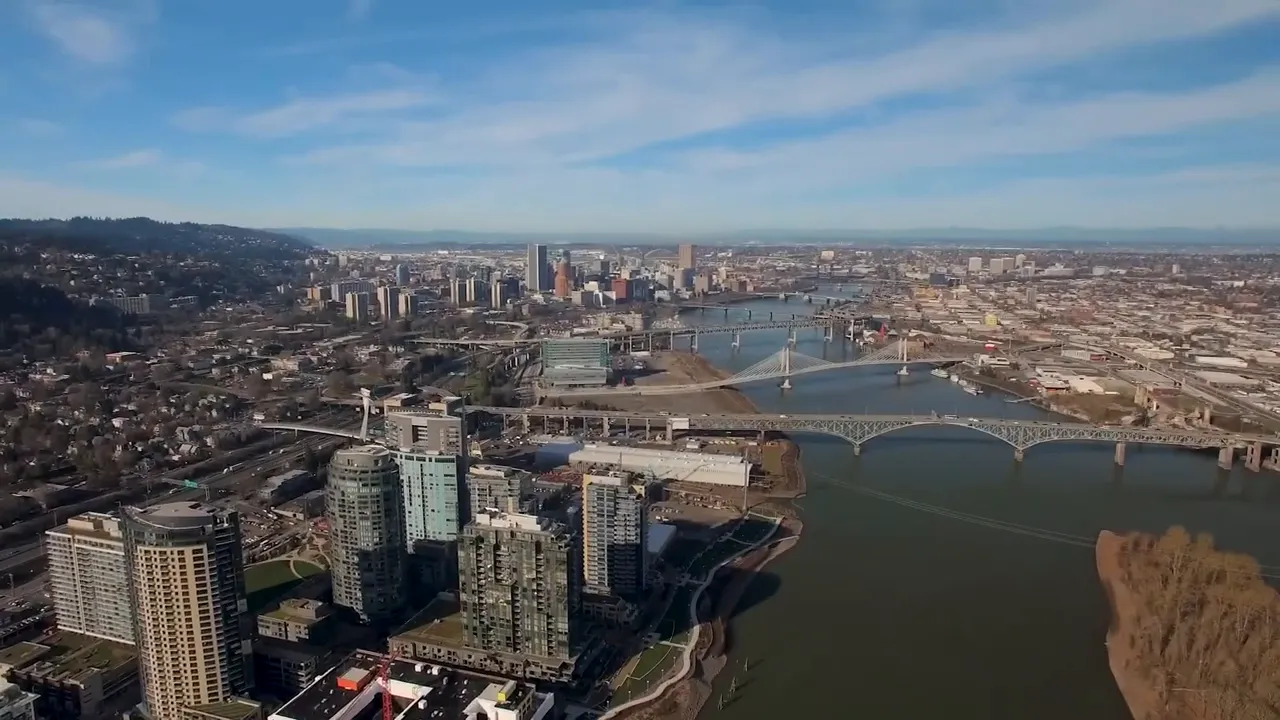
Of course, every city has trade-offs—housing prices, traffic, seasonal gray days—but if you’re the kind of person who wants to live where you can walk to a farmers market, bike to a scenic overlook, and find a primary care doctor without long delays, living in Portland, Oregon might be exactly what you’re looking for.
Frequently Asked Questions About Living in Portland, Oregon
Is living in Portland, Oregon healthy for families?
Yes—families often choose living in Portland, Oregon because of access to parks, family-friendly trails, community events, and pediatric care options like Emanuel Children's Hospital. The abundance of local food options and community farms also make it easier for families to prioritize nutrition.
How is the air quality year-round when living in Portland, Oregon?
Generally the air quality is good most of the year. Wildfire season and occasional weather stagnation can cause short-term smoke or haze, but long-term averages put Portland in a favorable position compared to many larger cities. Those who are sensitive to seasonal smoke do monitor air quality and adjust outdoor activities accordingly.
Can you be active year-round while living in Portland, Oregon?
Absolutely. Portland’s climate is mild compared to many parts of the country and supports year-round hiking, biking, and water sports. Indoor fitness options are also abundant for rainy days or winter training.
Are there good food options for special diets when living in Portland, Oregon?
Yes. Vegan, vegetarian, gluten-free, and allergy-friendly options are widely available. Portland’s food scene caters to a variety of dietary preferences and most restaurants list ingredient sources and notes about preparation.
What about green building and sustainable living when living in Portland, Oregon?
Portland has policies and incentives that encourage green roofs, energy efficiency, and sustainable neighborhood planning. Many new projects emphasize stormwater management and native plantings to create healthier neighborhoods for people and wildlife.
Is healthcare accessible when living in Portland, Oregon?
Yes—primary care access is comparatively strong and the region hosts major hospitals and specialty centers. There are also many integrative and functional healthcare practitioners for those who prefer a proactive approach.
How does living in Portland, Oregon compare cost-wise to other cities?
Costs vary widely depending on neighborhood and housing choices. While Portland can be more affordable than some West Coast tech hubs, it’s not a low-cost city. Consider trade-offs: higher costs can come with better access to outdoors, food, and healthcare—core elements many buyers prioritize.
Practical Tips for People Considering Moving to Portland, Oregon
- Visit in different seasons. Spend time in winter, spring, summer, and fall to get a feel for year-round living.
- Try local trails and neighborhoods. Walk the Springwater Corridor, explore Forest Park, and ride the old highway in the Gorge to see how accessible outdoors really are.
- Sample local markets and restaurants. Spend a Saturday at the Park Blocks farmers market to taste seasonal produce and meet farmers.
- Check healthcare networks. If you have specific providers or specialists you prefer, investigate local systems like Kaiser, Providence, or OHSU for availability.
- Consider housing and commute trade-offs. Neighborhoods close to trails or transit may cost more, but they offer lifestyle benefits that often make the premium worthwhile.
- Be prepared for rain. Having quality gear makes being active in rainy months enjoyable instead of a chore.
- Talk to locals. Neighborhood groups, hiking clubs, and local community centers are great ways to plug in and learn the rhythm of living in Portland, Oregon.
Final Thoughts on Living in Portland, Oregon
If your priorities include access to outdoor recreation, cleaner air, nutritious and locally sourced food, progressive building, and accessible healthcare, living in Portland, Oregon is worth serious consideration. The city fosters a culture where health and environment are part of everyday life—not just weekend activities. People move here to become more active, to be closer to nature, and to enjoy a food scene that values transparency and quality.
We hope this detailed look helps you evaluate whether living in Portland, Oregon fits your goals. If you want personalized guidance about neighborhoods, healthcare providers, or local resources, reach out to us through the Portland Life channel. We love helping people find the right fit for their lifestyle in this beautiful, active city.
